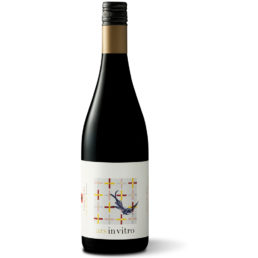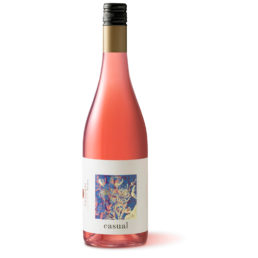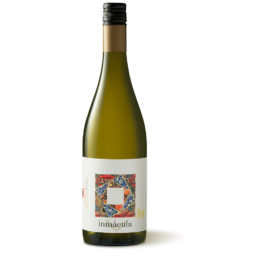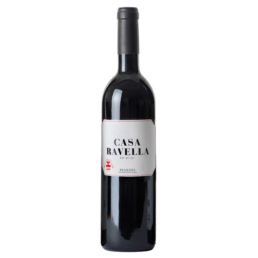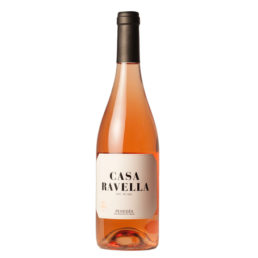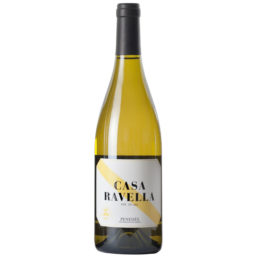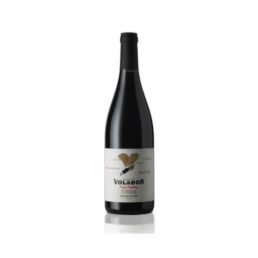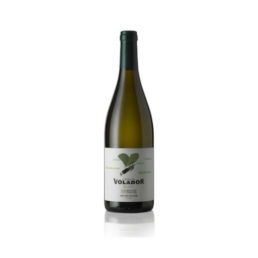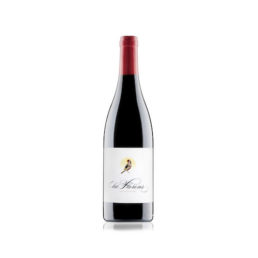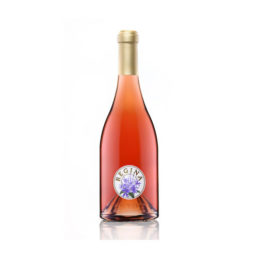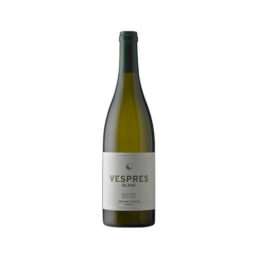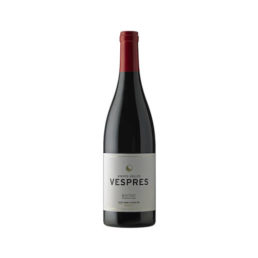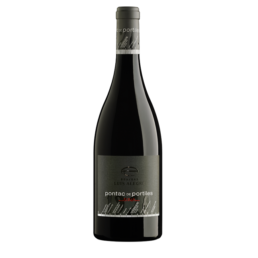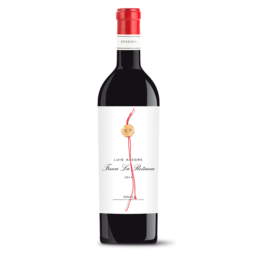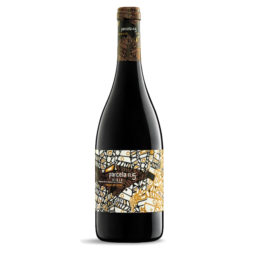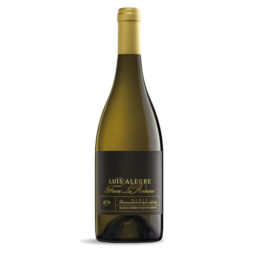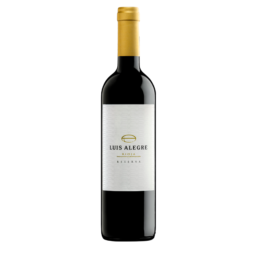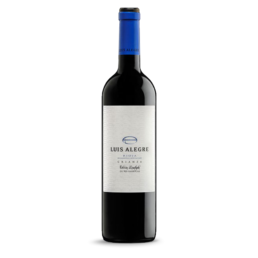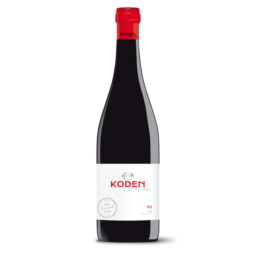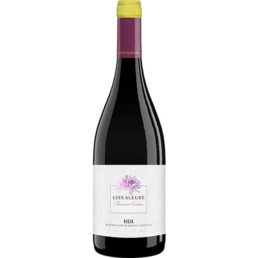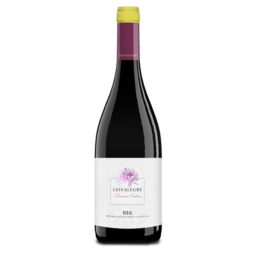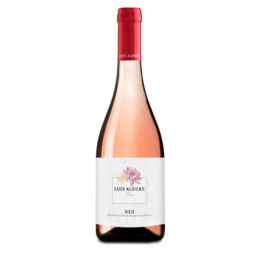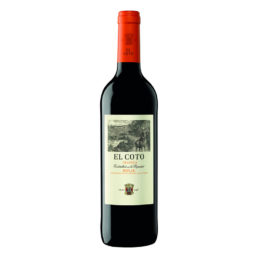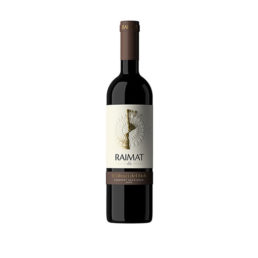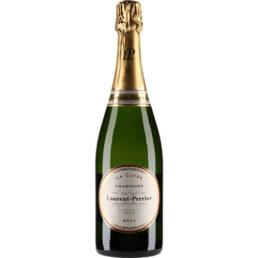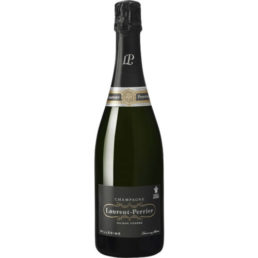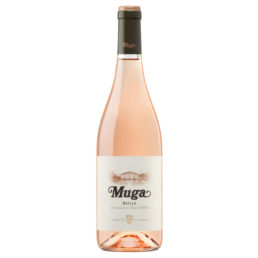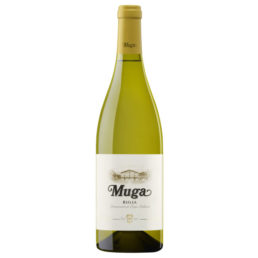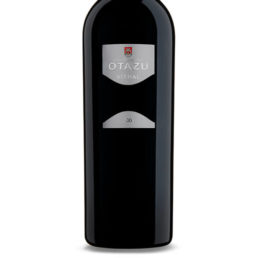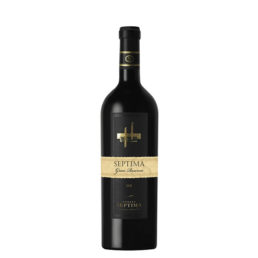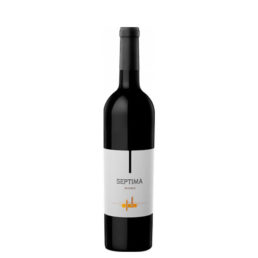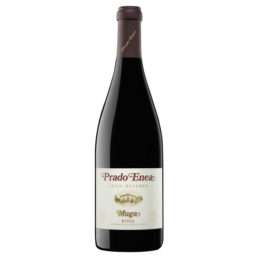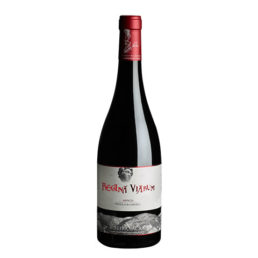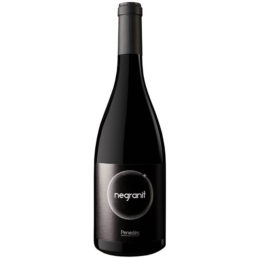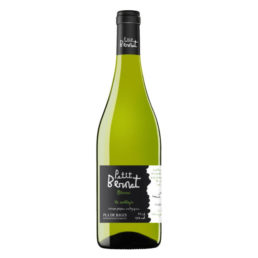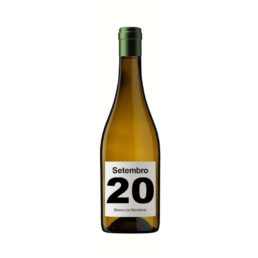2024
-
Red wine Tandem – Ars In Vitro
Ars in vitro In Latin, art in glass or in bottle. In this wine Tandem wants to express the freshness and power of its grapes from cold climate of the Valley of Yerri without the presence of wood. Cool, fun, for any occasion and nice.WinemakingCold pre-fermentation maceration. Fermentation 25-27 ºC in stainless steel without pumps, with immersion of the cap or pigeage. The wine is decanted by gravity to the concrete tanks on the lower floor of the winery of development where they perform the malolactic fermentation and clarify naturally by settling.Bottled by gravity with a filtration minimum.AgingMinimum 24 months in concrete tanks. Does not pass through wood.Press2011 - 89 points Stephen Tanzer International Wine Cellar, 88 points Robert Parker's Wine Advocate2012 - 90 puntos Stephen Tanzer2013 - The Wine Merchant Top 100, 91 puntos Vinous Antonio Galloni -
Rosé wine Tandem – Casual
Casual Of casualis in Latin, accidentally, luckily.WinemakingOnce destemmed, the grapes macerated for seven hours in a stainless steel tank.Sangramos the must yolk, which ferments slowly at a temperature of 16 ºC -
White wine Tandem – Inmácula
Inmácula In Latin, without stain. A different white fermented in French oak and kept on its fine lees for three months to gain texture and complexity.WinemakingAfter you remove the stems, the grapes macerated whole for a few hours in the tank.Sangramos the first wort and filled the barrels 300 liter French oak where it ferments at a temperature of 17-18 ºC Once the fermentation terminated, we begin with the bâtonnage journal, the process in which we mix the wine with the lees in order to get more volume in the mouth.Pressharvest 2013 - 90 points Wine&Spirits magazine, 90 points STEPHEN TANZER, 90 points ROBERT PARKER harvest 2014 - 90 points STEPHEN TANZER91 points PEÑIN Guide -
Red wine Casa Ravella – Casa Ravella Tinto Crianza
SOURCEAlt Penedès. Penedès denomination of Origin. Own vineyards of our farm House Ravella ('ordal).VINIFICATION AND AGEINGOnly own harvest. Manual harvest with selection of the grapes in own vineyard.De-stemming, total.Maceration and fermentation in French oak barrels open.Crianza of twelve months in French oak barrels. -
Rosé wine- Casa Ravella Rosado (ecological)
SOURCEAlt Penedès. Penedès denomination of Origin. Own vineyards of our farm House Ravella ('ordal).DEVELOPMENTOnly crops own. Manual harvest with selection of the grapes in own vineyard.De-stemming, total.After a short maceration, fermented in stainless steel tanks with temperature control. -
White Wine Crianza White House Ravella (ecological)
SOURCEAlt Penedès. Penedès denomination of Origin. Own vineyards of our farm House Ravella ('ordal).VINIFICATION AND AGEINGOnly own harvest. Manual harvest with selection of the grapes in own vineyard.After you get the “flower must” proceed to ferment in oak barrels, where later will be a minimum of six months on its own lees. -
White wine Young White House Ravella (ecological)
SOURCEAlt Penedès. Penedès denomination of Origin. Own vineyards of our farms Montargull and The Doghouse (St. Sebastià dels Gorgs) and Home Ravella ('ordal).DEVELOPMENTOnly crops own. Manual harvest with selection of the grapes in own vineyard.To obtain the “mosto flor” in pneumatic press.The clarification of the wort has been carried out using a decanting static.The fermentation is carried out by controlling the temperature, in stainless steel tanks. -
Red wine Josep Grau – L’ Effect Flying Vineyards Unique Magnum
THE VINEYARD AND VITICULTURE:Grapes that come from the farms surrounding the winery in Marca and farms in the municipality of Serra d Almos. The age of the vines is between the 15 and the 35 years old. Organic farming. The work is carried out 100% manually.VINIFICATION:Vintage in boxes 10 kg and immediate transportation to the winery, where you enter, keeping a part from the stems, in deposits of cement 17.700 liters. Indigenous yeasts and without added. Fermentation at low temperature to protect the fruit. Aging in the same deposits of cement for a period of 6 months. -
Red wine Josep Grau – L’ Efecte Flying Vinyes Singulars (50 cl)
THE VINEYARD AND VITICULTURE:Grapes that come from the farms surrounding the winery in Marca and farms in the municipality of Serra d Almos. The age of the vines is between the 15 and the 35 years old. Organic farming. The work is carried out 100% manually.VINIFICATION:Vintage in boxes 10 kg and immediate transportation to the winery, where you enter, keeping a part from the stems, in deposits of cement 17.700 liters. Indigenous yeasts and without added. Fermentation at low temperature to protect the fruit. Aging in the same deposits of cement for a period of 6 months. -
Red wine Josep Grau – L’ Efecte Flying Vinyes Singulars 2018
THE VINEYARD AND VITICULTURE:Grapes that come from the farms surrounding the winery in Marca and farms in the municipality of Serra d Almos. The age of the vines is between the 15 and the 35 years old. Organic farming. The work is carried out 100% manually.VINIFICATION:Vintage in boxes 10 kg and immediate transportation to the winery, where you enter, keeping a part from the stems, in deposits of cement 17.700 liters. Indigenous yeasts and without added. Fermentation at low temperature to protect the fruit. Aging in the same deposits of cement for a period of 6 months. -
Rosé wine Josep Grau – L’ Efecte Volador Rosat
Viticulture and VineyardsThe grapes for this wine comes from an estate of Marca (The Priorat) with clayey soils and decomposed granite. Vines 5 years of age. Organic cultivation. The work is carried out 100% manually.WinemakingThe grapes are harvest and pressed slowly in a pneumatic press for a period of 6 hours to perform a extraction slow of all the aromatic potential of the variety. Ferments for 15 days in stainless steel tanks, where it will remain after 5 more months to finish maturing. -
White wine Josep Grau – L’ Efecte Flying Blanc 2019
Viticulture and VineyardsThe grapes for this wine comes from an estate of Marca (The Priorat) with clayey soils and decomposed granite. Vines 5 years of age. Organic cultivation. The work is carried out 100% manually.WinemakingThe grapes are harvest and pressed slowly in a pneumatic press for a period of 6 hours to perform a extraction slow of all the aromatic potential of the variety. Ferments for 15 days in stainless steel tanks, where it will remain after 5 more months to finish maturing. -
Red wine Josep Grau – The Florens 2017
THE VINEYARD AND VITICULTURE:Comes from an estate with 3 different ages of plantation 40, 70 and 100 years, in the municipality of Marca (The Priorat). Soils of clayey composition. The Florens is a selection of grapes from the plot of 100 years. Organic cultivation. All the work is carried out 100% manually. Vintage in boxes 10 Kg.VINIFICATION:Indigenous yeasts and fermentation in tanks of cement. aging foudres round 2.500 litre capacity, for a period of 14 months. -
White wine Josep Grau – Granit 2018
Viticulture and VineyardsVineyard nestled in the terraces at Starting I Eat, at a height of 450 metres and very exposed to the wind coming from the sea. Soil 100% decomposed granite, with very little water retention and are rich in minerals. Organic cultivation. All the work is carried out manually. Vintage in boxes 10 kg.WinemakingPressed during 7 hours. Fermentation and aging in foudres of oak, austrian and German 2.000 litre capacity. Aging during 9 months with the lees. -
Rosé wine Josep Grau – Regina
Viticulture and VineyardsComes from 7 terraced terraces of Finca Partida Les Comes, very steep. The top has slate floors and the bottom is clayey. organic viticulture. All the work is carried out 100% manually.WinemakingPressing 7 hours. Temperature controlled fermentation in foudre of 2.000 litre capacity. Parenting 7 months in the same foudre.Bottled and labeled by hand in the original bottle of the first wines of Burgundy with asymmetrical shapes.Pairingvery gastronomic. You can pair with any dish. -
White wine Josep Grau – Vespres white
THE VINEYARD AND VITICULTURE:Farm 6 has. in the municipality of Marca (The Priorat) of 15 years of age, in soils of decomposed granite. Organic cultivation. All the work is carried out 100% manually. Vintage in boxes 10 Kg.VINIFICATION:Indigenous yeast. Pressing 6 hours and spontaneous fermentation foudres of 2.000 litre capacity. Parenting during 5 months on its lees in the same foudre fermentation. -
Red wine Josep Grau – Quote From Old Vines Magnum 2016
THE VINEYARD AND VITICULTURE:Farms of between 50 and 70 years of the towns of Marçà, Falset and Capçanes. Soils of various compositions, mostly stony, clayey and calcareous. Organic cultivation. All the work is carried out manually. Vintage in boxes 10 kg.VINIFICATION:Indigenous yeasts and fermentation in tanks of cement. aging foudres of 2.000 liter capacity for a period of 9 months. -
Red wine Josep Grau – Vespres Vinyes Velles
THE VINEYARD AND VITICULTURE:Farms of between 50 and 70 years of the towns of Marçà, Falset and Capçanes. Soils of various compositions, mostly stony, clayey and calcareous. Organic cultivation. All the work is carried out manually. Vintage in boxes 10 kg.VINIFICATION:Indigenous yeasts and fermentation in tanks of cement. aging foudres of 2.000 liter capacity for a period of 9 months. -
Red wine Luis Alegre – Pontac of Portiles 2010 / 2012
GREAT WINES FROM SMALL ESTATESGrapes from the vineyard of Finca Payment of Portiles, for almost a century and 1,5 has.Vines planted on a gentle slope, in the best years give a maximum of 4 barrels.Nose boxes 15 kg and strict selection tables.Fermented in 8 bocoyes French oak 600 kg capacity, with individualised temperature control to set the intense aromas that generates this vineyard. Of these eight are selected the two best per vintage and the wine passes to rest.AcknowledgementsProensa 96Tim Atkin 92Wine Advocate/Parker 93Jancis Robinson 17Guide Gourmet 97 -
Red wine Luis Alegre – Pontac 2014
GREAT WINES FROM SMALL ESTATESGrape of the Estate Portiles, planted in 1920. Soil limestone with influence iron, unusual in the area, that brings color, structure, deep aromas and atypical.Vintage manual boxes 15 kg.Selection table.Fermentation in a vat of small capacity.Raised during 21 months in new barrels of French of great quality, made to the “letter” for our winery.Slight clarification, and rest on rack until it reaches its fullness.AcknowledgementsGuide Proensa 2019 : 97 pointsPeñín 92Proensa 98Wine Enthusiast 91Jancis Robinson 17Guide Gourmet 94 -
Finca Rhenish Special Selection Tinto Luis Alegre 2014/2015
GREAT WINES FROM SMALL ESTATESGrapes from the vineyard Finca La Reñana. Their limestone soils provide elegance, high minerality and depth with a high potential to save.Vintage manual boxes 15 kg.Selection table.Raised during 16 months in new oak barrels from the best forests of France with a touch of american oak, that provides structure and aromatic complexity.Rests in bottle a minimum of 18 months.AcknowledgementsGuia Vinos Gourmets 2019: 95 pointsPeñín 91Tim Atkin 90Wine Advocate/Parker 90Jancis Robinson 16.5Gourmets guide 95 -
Red wine Luis Alegre – Plot no. 5 2016
GREAT WINES FROM SMALL ESTATESGrape of the Estate, Plot No. 5, located next to a salt water lagoon, so you have a soil and micro-climate that produces grapes with great personality.Vineyard with age more than 45 years and yields limited to 4.500 kg/ha.Nose boxes 15 kg.Selection table.The grapes is fermented and macerated in tanks conical stainless steel low-capacity (7.000kg) during 20 days.Raised in new barrels (French and american) during 14 months.Remains in the rack until its perfect maturity.AcknowledgementsGuide Gourmet 2018 94Stephen Tanzen 91Wine Enthusiast 92 -
White wine Luis Alegre – Finca La Reñana
GREAT WINES FROM SMALL ESTATESElaborated with grapes from Vineyards of Finca La Reñana, of 85 years old, located in the foothills of the Sierra Cantabria, to 650 m. with low returns (3.500 kg/ha) that allows slow ripening and slow.Vineyard Finca La Reñana, of 85 years old, located in the foothills of the Sierra Cantabria, to 650 m. with low returns (3.500 kg/ha) that allows slow ripening and slow.Vintage manual boxes 15 kg.Selection table.fermented barrels 7-8 months on its own fine lees.Battonage newspapers to extract proteins and sugars, and that they flow the wine.Special oak forest atypical from the Bertranges.Acknowledgements Peñín: 91
Peñín: 91 Tim Atkin 94
Tim Atkin 94 Wine Advocate/Parker 91
Wine Advocate/Parker 91 Stephen Tanzer 94
Stephen Tanzer 94 -
Red wine – Luis Alegre Reservation 2015
Elaborated with grapes from vineyards with an average age of 40 years belonging to the winery and controlled exclusively by the Technical Team of Bodegas Luis Alegre.Fermented and macerated with the skins during 25 days in tinos stainless steel low-capacity (12.000 Kg.).Happens to French oak barrels and american (50% approx).In this wine we look for the balance between the softness and elegance of the Parenting and the Power and structure of wine “Selected grapes” of this winery. -
Luis Alegre Crianza red wine 2016
Luis Alegre Crianza It born from grapes from vineyards of an average age of 30 years old. These are found on farms of soil clay and limestone to about 500 meters of altitude.Following a process of manual harvest, the beans macerated and fermented for about 15 days. Once the malolactic fermentation, Luis Alegre Crianza is transferred into American oak barrels and French.In the same is made the foster, that continues for about 14 months. The barrels are new and second -, third and fourth year. The 80% of these are of american oak and 20% remaining French oak.Luis Alegre Crianza finally rests a year in bottle before release for sale. -
Red wine Luis Alegre – KODEN 2018
Concept: techniques of making high range wines in grapes from young vineyards.Vineyards 20-25 years old.Parenting 9 months in new oak barrelsAcknowledgements Peñín 90 -
Luis Alegre Roughing red wine carbonic maceration 2018
With a limited production of 3.000 bottles, Luis Alegre Roughing 2017 it is elaborated with grapes from vineyards of 60 years of age. Once harvested manually, is encuban whole bunches and these undergo the technique of the carbonic maceration. After pressing, for obtaining of the must-wine, it is carried out a controlled fermentation between 16 and 17 degrees celsius during 4 the 5 additional days.After a process of stabilization between 4 and 5 weeks, the wine rests for a single day in French oak barrels for, below, proceed to grinding and bottling. -
Luis Alegre red wine carbonic maceration
Selection of grapes of viura from vineyards 35 years old.Vintage manual.Vatting of bunches with stems in stainless steel tanks and a “bed” of white wine to not “blow out” the first bunches.4-5 days of carbonic maceration, pressing and end of fermentation.AcknowledgementsGuide Gourmet 92Success: healthy, ripe grapes since there is no breeding to “cover up” defects.Always among the best of Spain in the two contests, the most prestigious wines young -
Rosé wine Luis Alegre – Luis Alegre Rosé 2019
Produced by direct pressing of grapes Tempranillo and Viura.Using pressure-controlled is extracted from the flower.To optimize primary aromas and high expressiveness comes at the sacrifice of a low yield (mash 60%).Fermentation constant at a temperature of 16º. -
Red wine Old
Old Red TempranilloOnce a Booking is made in our winery is located in Labastida, historic village of the Rioja Alavesa, protected by the sierra de Cantabria, on the banks of the River Ebro, to 4 km from Haro. The winery has a surface area of 35.000 m2 (15.000 m2 built) with a capacity of elaboration and bottling of 50 millions of bottles a year. Currently available 20.000 bordeaux barrels of american and French oak, where lie calm the wines before bottling and subsequent aging in the bottle. The wine cellar of Marqués de Carrión has a capacity of 1 million of bottles dedicated to reserva and gran reserva.Old Vintage Tinto is a Rioja that goes well with the tapas, Italian food like pasta, vegetables, inlaid, cold cuts and grilled meats. Old Vintage red wine is also available for gifts, events and celebrations in format small bottle of 375 ml. -
Red wine El Coto Crianza 2015
DEVELOPMENT All the process is carried out with a rigorous control of the temperature of fermentation and maceration. It thus achieves a suitable balance between structure and balance.FOSTER Minimum 12 months in american oak barrels of 225 liters and 6 months in the bottle at least. -
Red wine Raimat Vallcorba
Raimat Vallcorba it is a red wine produced by the winery Raimat in D. Or. Costers del Segre.Raimat is the second project Grup Codorniu, owned by the Raventos family. Raimat, further, highlights in the field of research in enology, with more than 30 research projects wine is an authentic reference to a european and global level.Raimat Vallcorba is made from Cabernet Sauvignon and Syrah. The Cabernet Sauvignon grapes come from the finca Vallcorba, of calcareous soils, burdensome, light and very drained. The Syrah come from the farm Tibidabo, soil surface, texture fine and compact.The winery Raimat practiced organic farming, All vineyards are certified the CICC (Consell Català de Producció Integrated).The whole development of Raimat Vallcorba is aimed to maintain the fruit expression and freshness of the primary aromas.Therefore, the fermentation is carried out along with the skins, in stainless steel tanks, at a controlled temperature of 28ºC. Subsequently, a long maceration of 1 month, during which the power extraction of the qualities of the grapes by pumping over and the presence of the skins ensures a wine with good body and texture.After the vinification, the wine passed an aging process of 20 months in French oak barrels (80%) and american (20%) of 225 liters. -
Champagne Brut Laurent Perrier -Cuvée
The wine comes from the grape juice more pure and only Laurent-Perrier can develop 'Cuvée', a champagne of great finesse and a beautiful freshness obtained after a long process of ageing in our cellars.The style and the personality of Laurent-Perrier is defined by its high proportion of Chardonnay. Purity, freshness and elegance - essential features, expressed in this champagne - they are a good introduction to the spirit of the house.By opting to merge its Brut champagne with a majority of Chardonnay, the grape variety more rare in the Champagne region, Laurent-Perrier expressed his difference and he said the style of freshness, lightness and elegance of the "Home".After 15 years of extensive work on the quality of the offer, the constant progress in terms of the development of the wine and the greater mastery of the art of the mix, Laurent-Perrier presents The Cuvée.Mix and wine making To the mixture, only used the musts of the cuvée, so that only the 80% the grape juice is extracted from the pressed.Varietal grape:The majority of Chardonnay, most of the 50%.Pinot Noir, most of the 30%.Rounded off with Meunier, between 10 and 20%.+ Reserve wines up to a 20-30% to ensure a perfect consistency in the style.Crus: the mix of Laurent-Perrier's Cuvée is made of more than 100 crus * selected by Laurent-Perrier.The Cuvée benefits from the aging ideal in the cellar. Its balance and freshness are enhanced by a light dosage.* These quantitative data may vary and are given for illustrative purposes.Pairing This wine is fresh and pure is perfect for an aperitif. Its notes of white fruits and citrus fruits and its considerable balance underpinned by a subtle effervescence, turn it into a ideal accompaniment to poultry and the best fish. -
Champagne Laurent Perrier – Brut Millésimé 2006
Laurent-Perrier has chosen to make crops very rarely, only by choosing the best years. This makes the Brut Millésimé it is an exceptional wine and exceptional that clearly express the specific character of a year in the style of Laurent-Perrier. Therefore, Laurent-Perrier Brut Millésimé 2006, champagne is a remarkable and exceptional.Mix and wine making Varietal grape: Chardonnay 50% Pinot Noir 50%Elaborado exclusivamente con uvas Chardonnay de la Côte des Blancs y uvas Pinot Noir de la Montagne de ReimsCrus: Pinot Noir from the Montagne de Reims: Verzy, Verzenay, Mailly, Louvois, Bouzy is the Chardonnay of the Côte des Blancs: Chouilly, Cramant, Oger y Le Mesnil-sur-Oger.Pairing This Vintage Brut 2006 it is perfect with terrines, ham, chicken and other white meats. -
Rosé wine Muga
Ring, Prado Enea and Torre Muga are among the best red wines of this country. Less well-known to the public is the excellent work carried out by the family Muga to when you develop your pink, one of the best that can be found in the D. O. Ca. Rioja: Flower of Muga Rosé 2017, mainly produced with grapes of garnacha.While the bodega Muga used for the red wines the garnachas grown in the foothills of the montes Obarenes, with a good ripening of the fruits by exposure to the sun, for the pink use bunches of garnacha from the hillside opposite, where a lower stroke allows for better freshness and preserve the fruit notes tangy and fresh, features of this Muga Rosado. The wine was fermented in small tanks made of wood and remained four months growing up with the fine lees and expanding its virtues.Elaboration After 12 hours of maceration, the wine ferments for 15-20 days in small containers of wood between 16- 18ºC. During 3 months maintain and work the fine sediments that magnify and enhance their virtues and organoleptic. Later we stabilized and cold filtered and bottled.Pairing with tartar of fish, ceviches, salads, folders, rice... -
White wine Muga 2017
The master of Bodegas Muga when working with oak is not just limited to the reds. Your white Muga 2017 it is an excellent example of the good work being done that has created school.Elaboration After approximately 8 hours of maceration in the press, this white wine is fermented in new barrels of French oak. After the fermentation remains with its lees during 3 months before being bottled.Pairing Perfect pairing for vegetable dishes, rice, seafood, tapas... -
Red wine Bodega Otazu Vitral
Bodega Otazu Vitral 2009 in individual boxBodega Otazu Vitral 2009 comes out to the market for the fourth time, after vintages 2004, 2005 and 2007. Has a very limited production, since it is only put on sale 900 bottles. It is made with a selection of the best grapes of Cabernet Sauvignon from the best parcels of the vineyards of Bodega Otazu.Vintage manual, separately, of each of the varieties and plots, with minimum temperature and maceration one week of cold pre-fermentation. -
Vino tinto La Coartada Great Choice
THE ALIBIRed Premium developed by Eladio Piñeiro in his mansion-cellar of Alentejo
After an intense search for five years, in 2004, we located a vineyard 35 years with very poor soils of slate, drop-offs and soft South exposure. Bringing more than eight in transition to biodynamic, in this period of time has been easy this transition, since the plant protection treatments to which it was subjected were almost non-existent. The vineyard is trellised, at a height of soil is relatively low, the pruning is done in Guyot double and its expansion vegetative is small, located on the northern boundary-the centre of the Alentejo, which has a very special microclimate, it is protected to the south-southeast, by the Serra da Ossa, to the north, for the Sierra de San Mamede and to the west by the Sierra of São Miguel.
-
Red Wine Seventh Great Booking
Seventh Great Booking is the best exponent of the Seventh line. The best parcels, the best grapes, the greatest care. This wine defines the style of wines from the Winery Seventh: fresh, ripe fruit, complex and friendly. Seventh Gran Reserva is their best exponent in sor mark flag.DEVELOPMENT (VINIFICATION)After a meticulous selection of bunches in the vineyard and the grapes in the winery, the musts are macerated at low temperatures between 10 and 15 days, with a daily monitoring by means of tastings. The fermentation occurs in stainless steel tanks in the presence of selected yeasts during 10 days, maintaining the temperature controlled 28 °C.The maceration extends in total between 30 and 35 days. Once completed the wine is stored in barrels of French and american oak of first use, where it will be based 18 months in cellars with controlled temperature and humidity by keeping each lot separate throughout the production process. Finally, the blend end is defined by tastings and fractionated in bottles for a final break 6 months in storage.Came from “alchemy” which marks the style of the Seventh line in Premium wines.VINEYARD (VITICULTURE)PAIRINGThe harvest 2013 filed normal weather during the flowering. The little amount of water coming from the mountain caused a natural water stress in the province of Mendoza, effect that has been repeated in the last two years. Early frost in some areas of Mendoza affected the performance and, as a result, were wines of great quality and concentration. During the months of February, march and April, the weather surprised us once again with days and cool nights, delaying the harvest between 7 and 10 days. The wines obtained resulted with acidity levels higher, fresh aromas of intense , sweet tannins, soft and round, and high levels of anthocyanins, all special features for the guardian.The yield was 6.000 kg/ha in the variety Malbec, 8.000 kg/ha for Cabernet Sauvignon and 10.000 kg/ha for the Tannat. After determining the optimal time of harvest, the grapes are harvested by hand in boxes 20 kilos during the early hours of the morning.Ideal to accompany dishes complex, high-calorie, high. It is recommended to open half an hour before. Temperature of service: 14 to 16 °C.AWARDSGOLD MEDAL BACCHUS - 2016SILVER MEDAL CONCOURS MONDIAL DE BRUXELLES - 2015 -
Red Wine Seventh Malbec
Seventh Malbec it's an argentinean red wine produced in the Wineries Seventh. It is the perfect balance between historical heritage, innovation and excellence in winemaking. Wine made 100% with the variety Malbec is a wine that is soft, warm and balanced.DEVELOPMENT (VINIFICATION) The grapes, harvested bines plastics 350 kg, they did the descobajado and a soft breaking of the grain to release all the juice inside. There, he led the must to the stainless steel tank, where she underwent a cold maceration between 8 and 10 °C for 5 days to achieve a delicate extraction of aromas and color. Then we proceeded to the planting of selected yeasts, giving origin to the start of the fermentation, it was controlled to a temperature of between 26 and 28 °C for 7 to 10 days. Daily were pumping over a very smooth way until the end of the fermentation. Finished this stage, the 100% the wine spent 6 months in contact with oak barrels of second use French and american. Once packaging, is estibó in a bottle 3 months.VINEYARD (VITICULTURE) The harvest began in the first fortnight of march, by collecting the clusters manually. It is a wine 100% Malbec is elaborated with grapes own from the district of Agrelo, Lujan de Cuyo. The precision farming practices in our vineyards allows to produce wines varietals that convey the maximum expression of the terroir. The ground, of zero tillage, it is very deep, of alluvial origin, with low contents of organic matter and excellent permeability. Is covered by grasses and legumes that provide nutrients and improve the structure, at the same time that it acts as a preventive control of early frost. The climate presents a great thermal amplitude that reaches the 15 degrees. With a balanced handling of the canopy is achieved to give a correct exposure of the bunches to the sun, to achieve an appropriate maturity not only of sugars, but in particular of polyphenols. Vines balanced, oriented in a system of trellis in cord bilateral, with an efficient control of drip irrigation resulting in optimal ripeness. The yield was 10.000 kg/ha.PAIRINGSeventh Malbec is ideal for accompanying red meats, hunting and prepared dishes. -
Red wine Muga – Ring 2009
Muga Aro 2009 it is made with a 70% Tempranillo and a 30% Graciano from vineyards selected of Bodegas Muga.The harvest 2009 it is characterized by very good, since it was cool Atlantic climate, factor that helped the grapes to mature slowly and progressive. The name wants to do homage to the wine capital of la rioja, Haro. The grape harvest was selected and meticulous to just get the grapes that were in perfect state of maturation.Once in the winery, the grapes were put in tanks of wood where maceraron and fermented for three weeks in a natural and spontaneous with indigenous yeasts and without temperature control. Subsequently, the red Rioja Muga Aro breeding in oak barrels, 18 months in new French oak and 6 months in deposits of oak, all of them self produced. Before bottling we made a slight clarification with egg white natural. Year after year, the critical wine-national and international give scores for Muga Aro very good.Awards95 Parker points95 points Guide Peñín -
Red wine Muga – Prado Enea Gran Reserva 2010
The large reserves are wines made to last for a long time, and icons of excellence. Prado Enea Gran Reserva 2010 it is made by Muga, with the last grapes enter the wine cellar to ensure an even ripening perfect, and it is born of a vintage exceptional: the 2010 (rated Excellent). Great aging potential.Elaboration Next to the grapes Torre Muga, the grapes for Prado Enea are always the last to enter the winery. With this we ensure an optimal maturity. The grape is fermented is always in tanks of oak 10.000 Kg. of capacity without temperature control or addition of yeasts. The maceration is variable but can last up to twenty days. The ageing of this wine is twelve months in deposits of oak 16.000 liters, thirty six months in oak barrels (minimum), and thirty six months (minimum) in the bottle. After the aging is performed by a light clarification with egg whites.Pairing This is a wine that can pair with stews, meats and even use it as a cup.Production 90.000 bottlesAwards97 by Robert Parker (The Wine Advocate)94 by Guía Peñín de los wines of Spain












